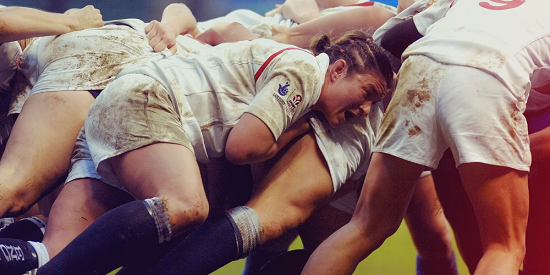 It’s one of the fastest-growing sports in the world, and yet, women’s rugby has almost no media presence and is seen by many otherwise fervent rugby supporters as a mere curiousity. It’s time to get with the game.
It’s one of the fastest-growing sports in the world, and yet, women’s rugby has almost no media presence and is seen by many otherwise fervent rugby supporters as a mere curiousity. It’s time to get with the game.
Ask most people what the fastest-growing sport on the planet is, and basketball and mixed martial arts will probably be among the popular answers. Mention women’s rugby, however, and you’ll elicit a few quizzical glances, perhaps even a nervous retreat from your presence.
After all, the sport is typically regarded as a hyper-masculine pursuit, with its blood-and-thunder mentality, brutal physicality and complete disregard for the merits of deodorant.
Well, World Rugby has revealed that the number of registered female players worldwide rocketed by 32,34% between 2014 and 2015. In 2015, there were 76 046 more registered female rugby players than in 2014, for a grand total of 311 204.
The sport has grown in leaps and bounds since emerging from the doldrums of administrative wrangling in the 80s and 90s. The World Cup, Sevens and Six Nations attract global interest and are growing in popularity.
South Africa boasts the highest number of registered women’s rugby players in the world. This is testament to sterling development work at national and provincial levels. Just last year, the South African Rugby Union launched a youth training initiative to grow women’s rugby in the country via centres in selected provinces, and with a view to establishing one for each union.
There is a robust school, club and provincial system in place for female rugby players, which has clearly borne fruit.
It was somewhat of a surprise that the South African Sports Council and Olympic Association declined to send the national women’s Sevens team to Rio Olympics, deeming the African championship, which they won and thus gained qualification, of too poor a standard.
Even if they did not stand a chance of winning a medal, participation in the Games would have done wonders to elevate the sport’s profile in the country.
Anyone who has had the fortune of playing rugby will attest to the fact that it is unparalleled as a team sport in building camaraderie, along with physical and mental empowerment.
Perhaps one of the reasons the sport’s boom in popularity among women has been that female disciplines – especially when it comes to team events – typically garner little media attention. There has been little exposure for the team on TV, with the result that aspiring young players have few role models to choose from.
With SuperSport breaking new ground by featuring the female Proteas as curtain-raisers last season, it would make sense for their rugby counterparts to be afforded the same opportunity.
The Varsity Cup, judging by the numbers of female spectators at the games and increasing interest in the sport among the youth, would be a perfect fit for a women’s division.
Women’s rugby is exactly the same as the men’s version, with none of the concessions seen in tennis. It’s high time that women, many of whom share the same zeal for the game as their male counterparts, got off the bleachers and boxes and into the ball game, encroaching on what has traditionally been men’s turf.
As someone who has always been surrounded by women possessed of immense fortitude, I will be rooting for them.
- This article first appeared on the Change Exchange, an online platform by BrightRock, provider of the first-ever life insurance that changes as your life changes. The opinions expressed in this piece are the writer’s own and don’t necessarily reflect the views of BrightRock.

Leave a Reply